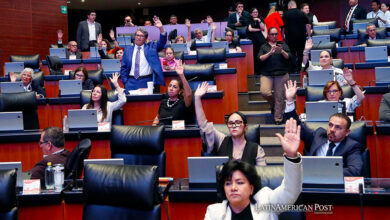El Salvador’s ecosystem restoration model that prioritizes the environment
Latin America and the Caribbean have taken important steps to respond to climate change. Countries such as Brazil, Mexico, Peru, and Colombia have made important agreements to reduce their carbon emissions. Between 1990 and 2012, deforestation in some countries decreased, such as Brazil and Mexico. Thereby, these countries have reduced the relative contribution of the forestry sector to overall emissions in the region.
Other countries such as Costa Rica, Uruguay, Nicaragua, and Chile are taking advantage of the potential of renewable energy and gradually reducing the contribution of fossil fuels to their energy network.
According to the Minister of Environment and Natural Resources (MARN), different international organizations were interested in invert in one Salvador’s ecosystem model of restauration.
On May 7, 2012, the MARN officially launched the National Program of Restoration of Ecosystems and Landscapes (PREP) with the final purpose to face the severe deterioration of ecosystems and the loss of main ecosystem services, which make El Salvador show a high environmental and social vulnerability in the face of a growing climate threat.
The Program satisfies the cost-benefit conditions, and it adopts an approach that addresses three strategic components: the development of a climate-friendly agriculture that is amicable to biodiversity, the restoration and inclusive conservation of critical ecosystems, and the synergistic development of physical infrastructure and natural infrastructure.
Minister Lina Pohl presented the “Restoration of Ecosystems and Landscapes of El Salvador” program in Germany during the fifth Global Landscape Forum (PREP), in which she “met with representatives of different institutions related to climate finance, who they were interested”.
Minister Pohl said that these officials “pointed out that it is important for the Government of El Salvador to prioritize the issue of the environment on the national schedule” and that, in addition, they recognized that the Salvadoran model of restoration “is a leading program that will serve as a reference in large-scale reforestation “.
The large-scale restoration proposed in the PREP is fundamental, especially when three quarters of the land in the country have an agricultural use, which makes it obvious that the path to follow points to the transformation of agricultural culture.
The main objective is to be able to include everyone, especially international donors. Meanwhile, the financing climate is being directed towards countries with large forest masses that can capture carbon. However, small countries like El Salvador, “the one that we can adapt to the conditions of climate change, it seems to be a pending task and we will not rest until we reach the goal “.
By the way, it is important to present strategies that prioritize the environment above the same cost. The strategies must go hand in hand with social awareness and environmental care. The same people must optimize the strategies day by day.
LatinAmerican Post | Helber Rojas
Copy edited by Marcela Peñaloza





